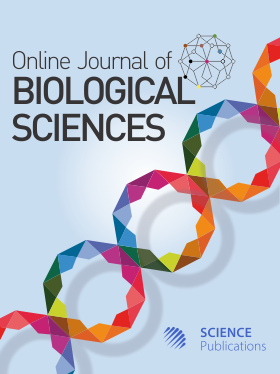Effectiveness of the Use of Genetic Markers of Meat Productivity in the Kazakh White-Headed Breed Identified Using Genome-Wide Association Study
- 1 Zhangir Khan West Kazakhstan Agrarian Technical University, Uralsk, Kazakhstan
- 2 Belarusian State Pedagogical University Named after Maxim Tank, Minsk, Belarus
- 3 Akhmet Baitursynuly Kostanay Regional University, Kostanay, Kazakhstan
- 4 Russian State Agrarian University-Moscow Timiryazev Agricultural Academy, Moscow, Russia
- 5 Scientific and Production Center of Animal Husbandry and Veterinary Medicine, Astana, Kazakhstan
Abstract
The study aimed to determine the effectiveness of the use of genetic markers in cattle of the Kazakh white-headed breed identified using a genome-wide association study. The object of the study was the livestock of 790 Kazakh white-headed bulls bred in breeding farms of the Republic of Kazakhstan. The study adheres to rigorous ethical standards, with all procedures approved by the national scientific council of the national center for state scientific and technical expertise of the science committee of the ministry of science and higher education of the Republic of Kazakhstan, ensuring the welfare and ethical treatment of all animals involved. Genotypes of Kazakh white-headed breed animals were determined using gene seek GGP Bovine 150 K (Neogen) chips. Data processing was carried out using Genome Studio and Plink software. Seven genotype markers associated with an increase in live weight at the age of 12 months were found in cattle of the Kazakh white-headed breed and the greatest phenotypic effect was found in the genotype rs42549324/EPHA8/GG. Evaluation of the phenotypic effects of single nucleotide polymorphisms on the average daily weight gain of Kazakh white-headed breed animals showed that 13 genotypes that increased this trait, as well as 38 genotypes that decreased it, were associated with this trait. Analysis of the growth intensity and economic efficiency of breeding Kazakh white-headed breed animals showed that animals carrying the rs109490287/CC genotype had the largest absolute gain compared to the total sample; and animals with the rs136460595/SEMA6D/GG genotype, on the contrary, were characterized by the smallest absolute gain compared to the total sample. According to the results of the median test, 39 diplotypes were found in the Kazakh white-headed breed that increased live weight at the age of 12 months, of which 18 diplotypes had a more pronounced phenotypic effect than the separate genotype rs42549324/EPHA8/GG. The median test also allowed for revealing 53 diplotypes associated with increased average daily gain, of which 12 were characterized by a more pronounced phenotypic effect compared to individual marker genotypes, as well as 26 diplotypes affecting reduced indicators of average daily gain. Our findings contribute significantly to the field by identifying specific genetic markers that can be used to predict and improve meat productivity in the Kazakh white-headed cattle breed. This research not only adds to the genetic knowledge base of this particular breed but also offers practical applications for breeders aiming to enhance meat production efficiency through genetic selection.
DOI: https://doi.org/10.3844/ojbsci.2024.624.632

- 3,500 Views
- 1,543 Downloads
- 0 Citations
Download
Keywords
- Сattle
- Live Weight
- Average Daily Gain
- Quantitative Trait Locus
- Single Nucleotide Polymorphisms
